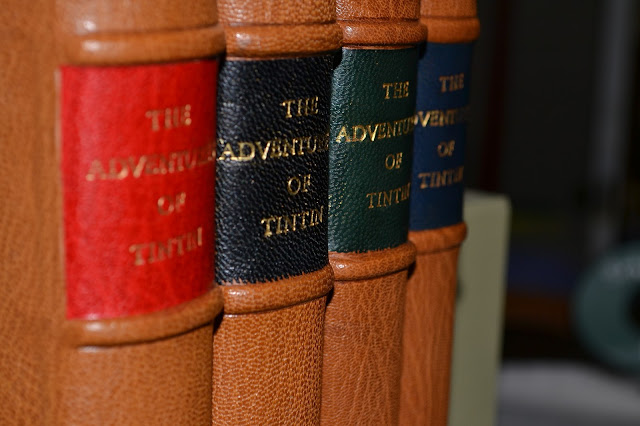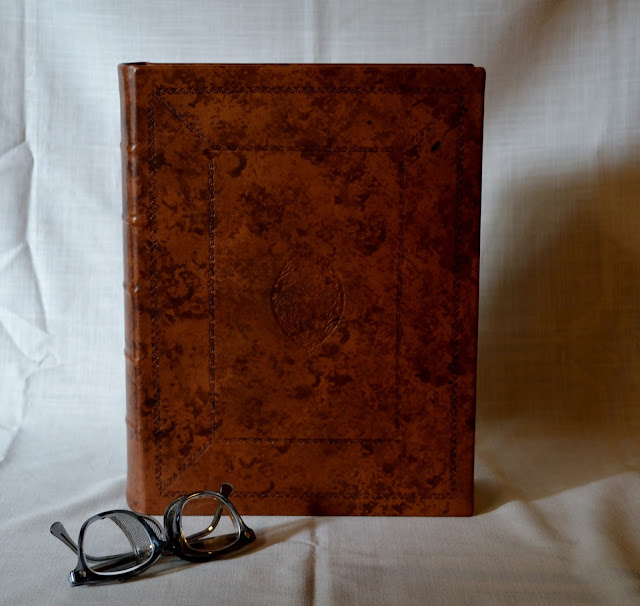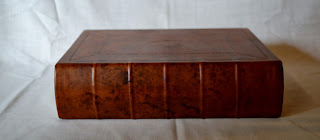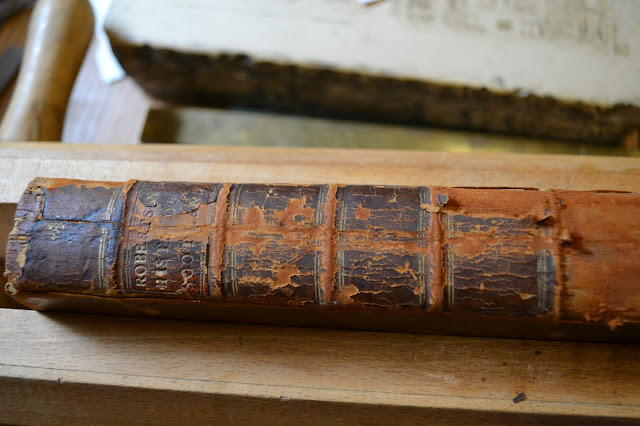
Custom built boxes are a useful preservation tool, but they don't have to look like boxes. The enclosures above were commissioned for two specific projects. The one on the left, bound in British tan goatskin with blind tooling and a raised band spine, was built for an important original score. The box on the right houses a very special copy of Judah Paddock's Narrative of the Shipwreck of the Ship Oswego (1818). The narrative had been well used and came to me in a very sailorly binding. When the original spine failed, a long dead sailor thrice rammed an awl through the spine and boards about an eighth of an inch in from the spine folds. He then used tarred marlin to hold the entirety together. I read it in this way, but it was not a book one could loan out. Yet, it had so much character that I didn't want to rebind it in the standard way. What I did was chain stitch the book on its original stations with two bristol stubs front and back. These were let in to the original boards. As a final touch, I used linen cord threaded through the original holes in the cover. Thus, I maintained its original character while making it easily readable once again. But how to title a spineless book?
My solution was to build a book shaped box. I've been experimenting with tree calf and it seemed like a suitable project for further experimentation. Tree calf is produced using chemical reactions on undyed calfskin and is meant to give the appearance of a branching tree on the covers. The resulting box provides protection for the original unorthodox binding and allows for titling and placement on a standard set of shelves.












